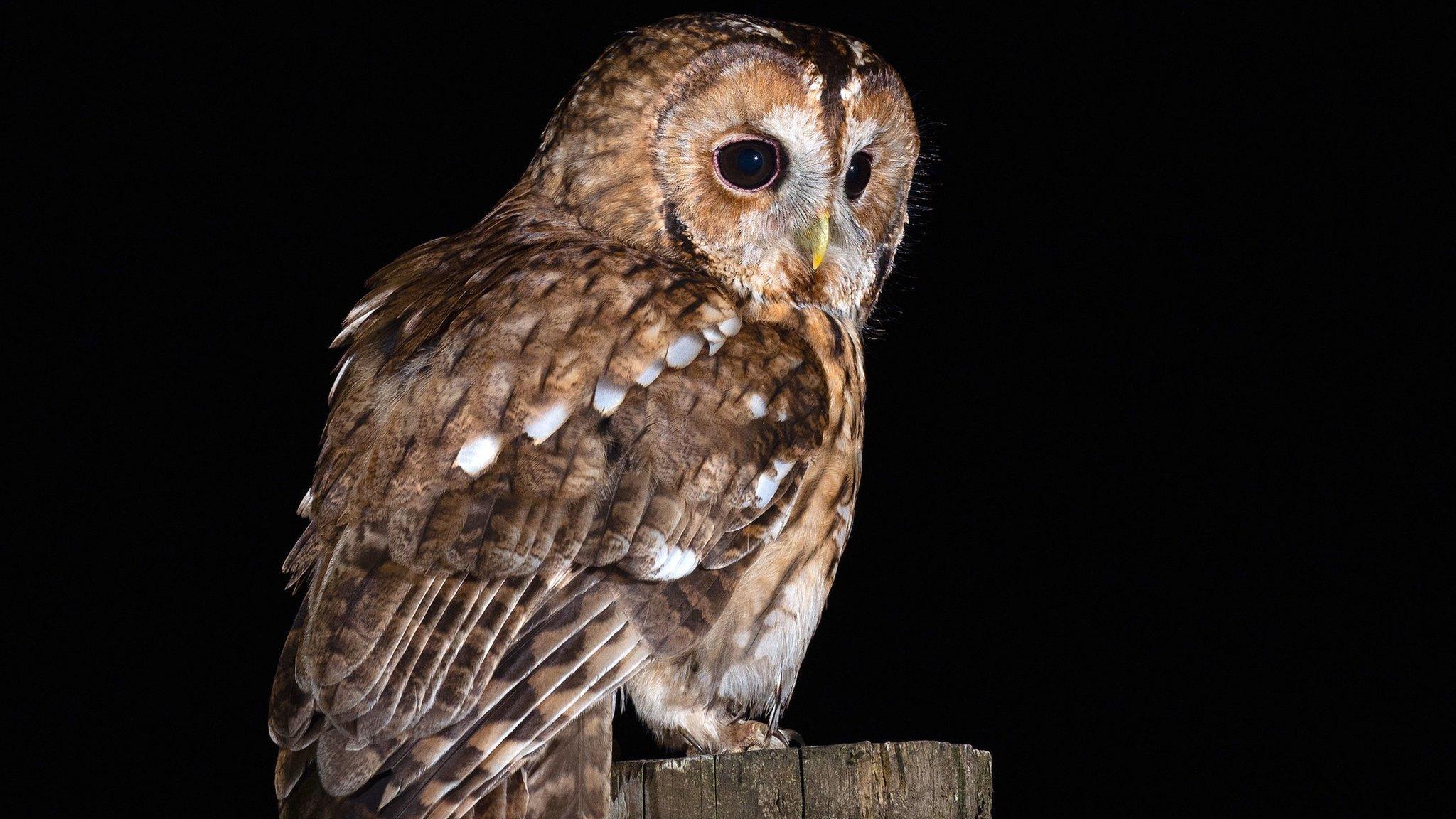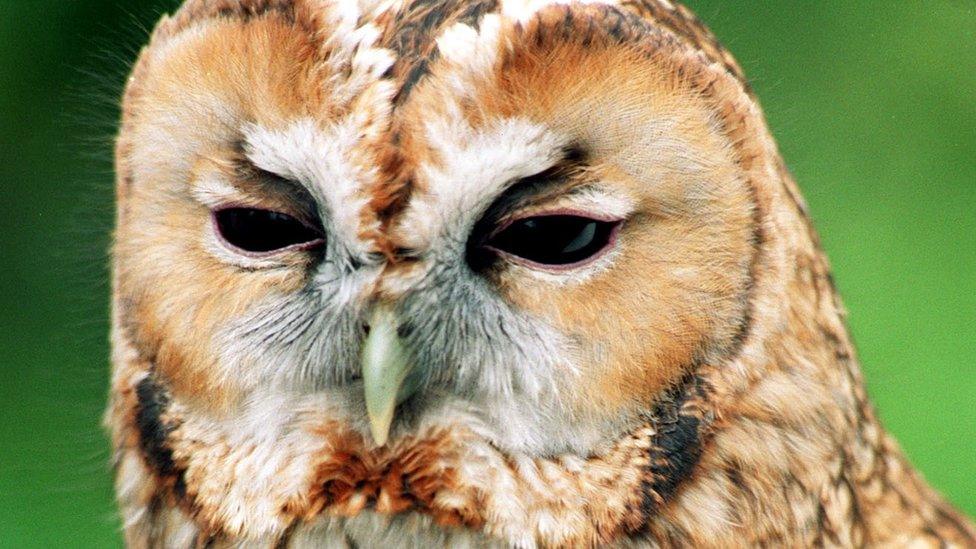Tawny owl decline: Public urged to record 'twit-twoos'
- Published

The Tawny owl is recognised by its classic twit-twoo call
Bird lovers are being urged to give up 20 minutes every week to listen out for the "twit-twoo" call of the Tawny owl, amid concerns over its numbers.
The British Trust for Ornithology (BTO) is asking people to listen for the distinctive hoot from their garden, a local park or woodland, once every week for the next six months.
"You can even do it from the comfort of your bed," said BTO's Claire Boothby.
Light pollution and urbanisation are thought to be impacting populations.
The conservation status of the Tawny owl recently changed from green to amber, signalling a growing concern for the species.
'Anyone can take part'
Researchers hope the Tawny Owl Calling survey, external, which runs from 30 September to 31 March, will help them understand if, and where, the bird may be in decline.
They say it is not essential that members of the public listen every single week, insisting that all data will be useful - even in locations where an owl call cannot be heard as this indicates where the species is missing.
"Anyone can take part, and the more people that do, the better picture scientists at BTO will have of our Tawny owl," Ms Boothby said.

The Tawny owl is typically found in mixed woodland, but also large urban parks and even suburban gardens.
The nocturnal bird usually remains in the same territory and maintains a monogamous relationship.
The twit-twoo motif is a combination of the female call, described as a "kewick" sound, and the male's response - a long, wavering hoot.
There are currently thought to be about 50,000 breeding pairs in the UK.